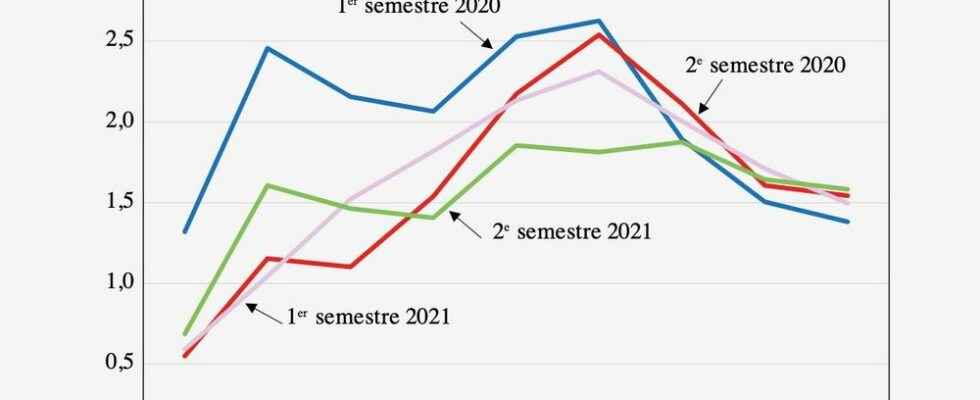In general, at the same ages, men are more likely to die than women. The Covid-19 crisis has not departed from this immutable rule which today leaves the former with a life expectancy of 79.3 years against 84.5 for the latter. But during this pandemic, how many deaths precisely did this excess mortality amount to? The National Institute for Demographic Studies (INED) answered this question in a study published this Thursday, March 24.
Fairly large deviations were expected. “On the one hand because women are biologically less fragile than men”, note the two authors, Gilles Pison and France Meslé. And that their activities and behaviors are not quite the same, especially in terms of health. “Throughout life, men take more risks than women and more frequently engage in behaviors harmful to health, in particular they smoke more and drink more alcohol. Women, on the other hand, are generally more attentive to their health and consult doctors more often”, they continue.
In the first half of 2020, at the very start of the epidemic, a man between the ages of 65 and 74 was around 2.5 times more likely to die from the disease than a woman of the same age. The male-to-female mortality ratio in this age group was in 2019 just over two. The dynamic is similar or almost similar among 55-64 year olds. Only young people seem logically less affected by excess mortality between sexes linked to Covid-19, which kills them little, or rather less than other causes at this age (accidents, suicides, etc.).
Covid-19 excess male-female mortality
INED
A notable vaccine effect in 65-74 year olds?
The curves nevertheless sag with the arrival of vaccines, at the beginning of 2021. Thanks to this turning point, the usual excess mortality of men over women decreases markedly in the most exposed age groups. For 65-74 year olds, in particular, the decline is greater than that observed elsewhere. “The main bump [représentant le rapport de surmortalité le plus élevé]centered around 65-74 years, partially collapses in the 2nd half of 2021, perhaps in connection with vaccination”, even indicate the authors. We notice, indeed, that in the second half of 2021 (green curve on the image above), the excess mortality ratio among 65-74 year olds is below the two men to one woman mark.
“At these ages, the proportion of unvaccinated people is higher among women than among men: more than 10% against less than 8%”, reveal the researchers who rely on non-public data, communicated by the Fund. national health insurance (Cnam). This difference in coverage between the sexes is not necessarily a reason for will or mistrust. “This difference could be because men were considered priorities for vaccination more often than women of the same age, due to more frequent comorbidities,” the study also says.
This does not prevent its authors from being rather surprised. “Amazingly, men would thus have been more attentive to their health than women in the case of vaccination against Covid-19, or at least more obedient to health directives.” While it is more often the opposite, outside of a crisis.
